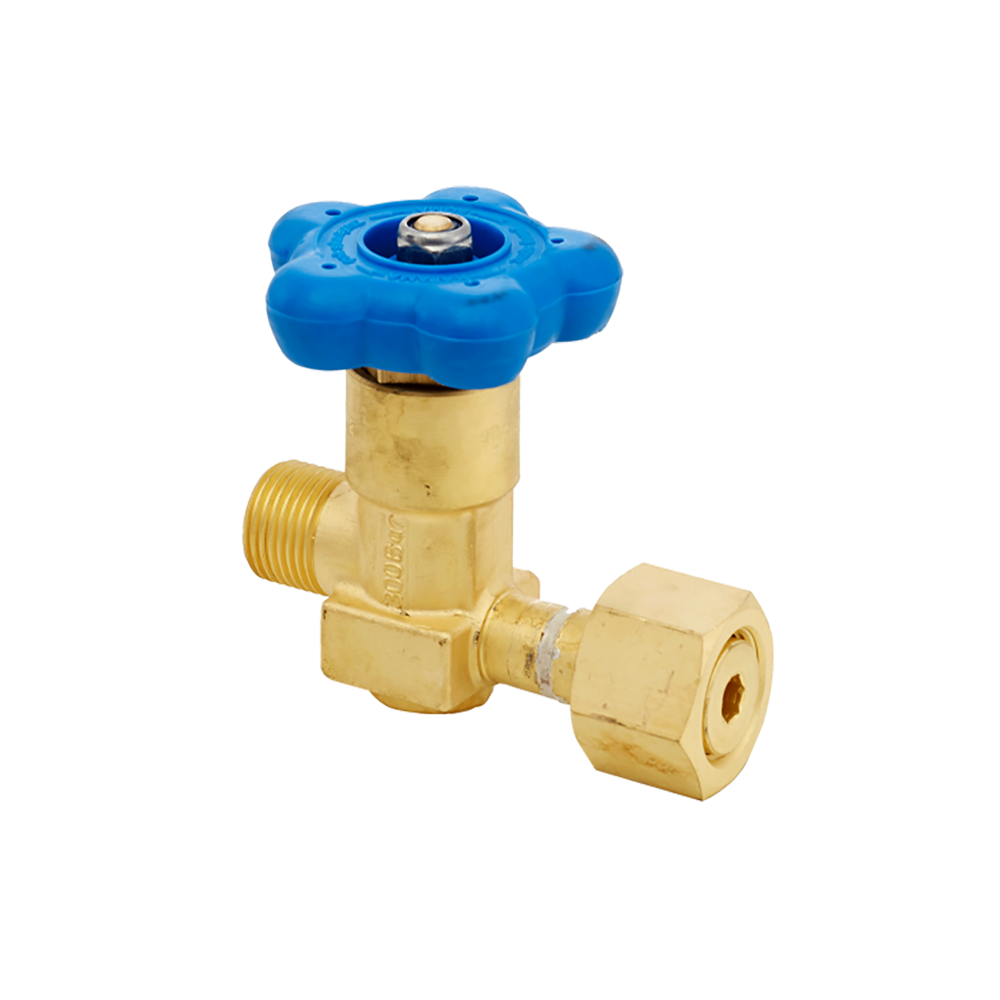Evacuation Valve

Evacuation Valve: Essential Component for Safe Collector Gas Discharge
The Evacuation Valve is a key safety element in medical gas collector systems. Its primary purpose is to release residual gas pressure from the manifold or collector line before cylinder removal. By allowing safe evacuation of the gas, it prevents uncontrolled release, ensuring both user safety and system integrity.
In environments where gas cylinders are regularly connected and disconnected, the Evacuation Valve becomes an essential part of the overall medical gas infrastructure.
Designed for Controlled Pressure Discharge
The valve is constructed with a single gas outlet point, specifically designed to allow controlled discharge. This outlet ensures a steady and directed flow of residual gas out of the collector, minimizing risk to personnel during maintenance or cylinder replacement.
Pressure relief before cylinder disconnection is critical. Without proper evacuation, trapped gas could cause dangerous blowouts, noise, or injury. The Evacuation Valve eliminates that risk by providing a predictable and manageable outlet.
Material and Construction
The valve is manufactured from brass, a material well-known for its durability and compatibility with high-pressure gas systems. Brass also offers excellent corrosion resistance, ensuring the valve performs reliably over extended use.
In addition to durability, brass construction ensures a tight, leak-free seal at the gas outlet. This is especially important in medical settings where safety and hygiene are paramount.
Functional Use in Collector Systems
The Evacuation Valve is positioned at a designated point in the collector assembly. When a cylinder needs to be removed, the technician opens the valve to release internal pressure. Once the gas has been safely discharged, the cylinder can be disconnected without any risk of sudden release or residual pressure.
This valve serves a single but critical function: pressure management at the collector level. Although small in size, its role in safe system operation is significant.
Ease of Installation and Use
The valve is compact and can be integrated into any standard gas collector setup. Installation requires basic fitting tools and does not demand complex configuration. Once in place, the valve operates with a simple open-close mechanism.
Due to its simplicity, the Evacuation Valve requires minimal training for operation. It can be opened by hand or with standard tools, and regular visual inspection is sufficient to verify its performance.
Ideal Use Cases
This valve is commonly found in:
-
Oxygen cylinder collector systems
-
Medical air collector assemblies
-
Nitrous oxide or CO2 manifold lines
-
Emergency gas disconnection procedures
In all cases, it provides the same function: ensuring that residual pressure does not create hazards when the system is opened.
Safety and System Integrity
In addition to protecting personnel, the Evacuation Valve also helps preserve the structural integrity of the collector system. Sudden gas release or mishandling during cylinder removal can damage valve heads, regulators, or other sensitive components. Controlled evacuation prevents such incidents and prolongs the life of connected systems.
Key Features of the Evacuation Valve
-
Designed for gas pressure discharge in collectors
-
Single outlet for directional gas evacuation
-
Made from durable brass
-
Enables safe cylinder removal
-
Compact and easy to install
-
Compatible with all standard collector systems
-
No complex operation required
Conclusion
The Evacuation Valve from Tecnomed is a small but essential device that plays a vital role in the safe operation of medical and industrial gas systems. By enabling controlled discharge of pressure before cylinder removal, it protects both the user and the equipment.
Its brass construction, simple design, and functional effectiveness make it a must-have for any oxygen, air, or mixed-gas collector setup.
Our Contact Information
Contact
+90 212 909 0484
Address
İkitelli Osb. Metal iş Sanayi Sitesi 19.Blok No:40 Başakşehir İSTANBUL-TÜRKİYE
E-Mail
info@tecnomed.com.tr
sales@tecnomed.com.tr
Most Searched
Bed Head Unit, Intensive Care Unit, Manifold System, Medical Flowmeter, Medical Gas, Medical Gas Outlet, Medical Gas Socket, Medical Gas Terminal, Medical Gas Systems, Medical Pendant, Medikal Gaz, Operating Room Pendant, Oxygen Flowmeter, Oxygen Manifold System, Oxygen Outlet, Oxygen Terminal, Suction Regulator, Surgical Pendant
Tecnomed Copyright © 2024 All rights reserved.

